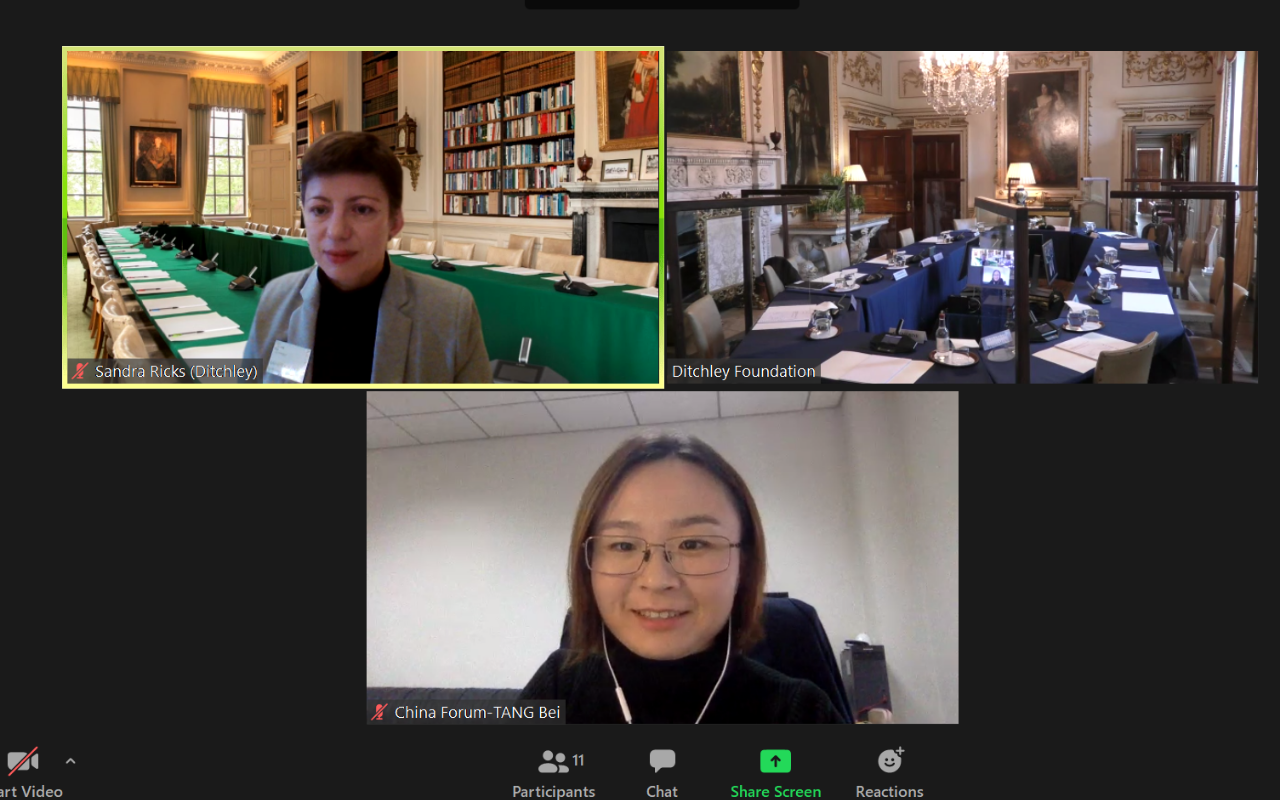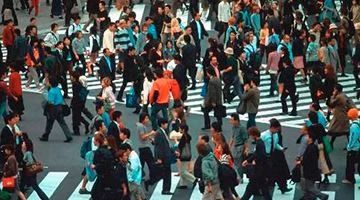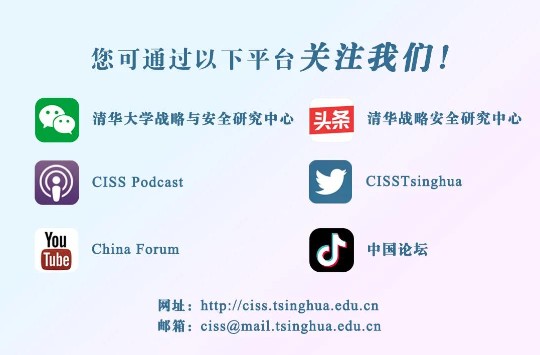汤蓓:上海外国语大学副教授、中国论坛特约专家
流动性与中国的抗疫政策
Mobility and China’s Response to Covid-19
2020年10月16日,清华大学战略与安全研究中心中国论坛特约专家、上海外国语大学国际关系与公共事务学院汤蓓副研究员出席了由英国知名智库迪驰力基金会(Ditchley Foundation)举办的“与新冠病毒共存”圆桌讨论会并发言。汤蓓与来自英国、德国、日本、新加坡、印度、刚果(金)、南非等欧洲、亚洲及非洲国家的智库专家学者围绕各国的抗疫举措、全球新冠肺炎的发展趋势及其地缘政治经济影响进行了讨论。发言全文如下:
本次讨论的一个重要主题是,如果疫苗在短期内无法大规模付诸使用,各国是否能够逐步恢复正常生活,在这一过程中应该如何平衡脆弱群体——特别是老年人——与更年轻的世代之间的关系。

讨论这一问题对于中国也有特别的意义。到目前为止,全力遏制疫情、拯救生命依然是中国政策主要基调。国家主席习近平在多个场合表示过:
“我们不惜一切代价救治生命。无论年龄再大、病情再重,我们也决不放弃,这次抗疫斗争中,我们成功救治的年龄最大患者是108岁。”“湖北救治的80岁以上的新冠肺炎患者有3000多人。”
那么,如果全球疫情长期化而疫苗又难以普及,中国是否会放松现行做法,像许多国家一样,只要重症患者人数不至于压垮医疗体系,就允许有一定规模的感染率?如果出现第二波疫情——不少公共卫生专家们预测第二波很难避免,中国社会是否愿意接受以老年人等脆弱人群为代价,更快速地恢复社会经济的正常运作?
我个人的回答是“不会”。一个简单的解释是,这与中国传统儒家思想中对老年人的尊重有关。而且,在今天的中国,由年轻父母组成的核心家庭往往需要老人帮助照顾孙辈,以便两人均能够工作。因而老年人对于家庭乃至社会依然是非常重要的人力资源。不过,除了这些原因之外,更为重要的是,今天中国经济发展的基本形态也决定了必须采取全面防控疫情的策略。
我做出判断的前提是,中国已经进入了一个超级流动的社会,这种流动性是经济发展的引擎和动力,同时也是许多家庭生计的来源。中国的公共基础设施建设在过去十年中得到了长足的发展,这是中国的高铁网络和高速公路网络地图,中国已经有248个民用机场。可以看到,中国大部分地区借助这些网络已经紧密地联系在一起。2019年,中国铁路的旅客发送量达到36.6亿人,民航运输旅客6.6亿人次。除了公共交通之外,中国私家车的保有量目前是2亿辆,而且这一数字还在不断增加。

结果是,中国的流动人口——在其户籍所在地以外居住6个月以上的人口的数量一直快速增加,已经达到了2.4亿。城市是大部分人口流动的目的地。
大量的就业机会、更好的教育与医疗资源,都吸引着许多来自农村的人口往城市聚集。中国的经济增长受益于此。一些研究认为,流动人口对中国经济增长的贡献率达到20-30%。与此同时,与交通和人口流动相关的旅游业与商业也在蓬勃发展。
人口密度极高的城市内部也充满了流动。地铁、出租车、私家车、共享单车、快递构成了普通人日常生活的基本图景。在北京,一位确诊感染者提供了38位密切接触者的名单,随后防疫人员通过大数据识别出了存在感染风险的35.6万人。这正展示出城市生活中人们高度交互的特点。

这对中国Covid-19疫情的防控意味着什么呢?
第一,大城市越来越可能成为疫情的首发地。即便SARS-COV-2病毒首先出现在其他地方,也非常可能通过就医等行为被带入武汉这一人口密集的大城市,并首先爆发。中国近期的局部疫情,恰恰都是在人与物集中的城市出现的,如北京、乌鲁木齐与最近的青岛。
第二,一旦病毒具有较强的传染性,例如Covid-19病毒,将迅速地通过交通网络向外扩散。2003年SARS疫情在波及范围上完全无法与本次疫情相提并论,除了病毒自身的特性之外,今天全球社会流动性的大大增加也是非常重要的原因。这也可以解释,当武汉出现社区传染后,中国政府为何要切断武汉与外界的公共交通。公共卫生专家估计,此举让中国减少感染者50-300万,减少病亡人数1.8-7万人。与此同时,由于社会已经成为紧密联系的整体,对社会进行分层化管理——例如保护脆弱人群而放任病毒在健康人群中传播——事实上非常困难,也很难奏效。

第三,在这样通过高度流动性而整合起来的社会中,如果检测手段不足而又没有有效疫苗与特效药,一旦疫情已经扩散——像1月底的中国,唯一的做法就是按下“暂停键”。否则,在流动性这一助燃剂的帮助下,放任个别地区疫情的小火苗不被扑灭,很快就会燃烧成熊熊大火。鉴于中国庞大的人口规模,即便是很低的感染率也可能造成医疗系统被压垮,其严重性已经在武汉早期疫情中得到了充分的展示。
第四,所有人面对Covid-19病毒都是脆弱的,这一事实也影响了社会心理,而这对防疫政策有重要影响。一个值得注意的现象是,在疫情刚刚爆发的阶段,中国发展水平较为落后的农村地区——通常在村委会的组织下——自发实施比政府要求更加严格的防疫措施,甚至违反法律挖断道路。在上海和北京,在政府没有出台任何规定时,一些小区的物业和保安就开始禁止外来人员进入。这些现象恰恰是民众在面对脆弱性时的自我防护机制。一些人认为中国政府主导了疫情防控的观点其实是片面的。从1月底到3月底,政府的很多措施事实上是回应社会的要求。一些在西方人看来侵犯了人权、自由的激烈措施,事实上符合中国的现实要求,是有民意基础的。很多时候,人们也赞成严厉地处罚规则破坏者,因为他们的行为会带来社会成本。中国的网民甚至发明了一个词,叫“硬核防疫”,来表示他们对这些措施的赞赏。民众自我防护带来的一个结果是,如果疫情存在,即便政府放松管制,社会经济活动也会被迫受到影响,其程度甚至可能超出政府在理性基础上订立的限制措施。例如,最近青岛因为出现了3例无症状感染者,政府决定对全市900多万人进行核酸检测,一位公共卫生专家(卢洪洲)表示,原因之一就是因为传播链尚不清晰,“为了让老百姓放心”。
到这里,应该可以对最初的问题给出明确的答案。对于中国来说,很难想象一种疫情长期大范围存在而社会经济得到恢复的“常态”。决策者面前的选项其实是遏制疫情后实现高水平的经济恢复,还是一场持续的卫生与经济双重危机。任何理性的决策者都很容易得出结论。
中国已经从本次疫情中吸取了教训。在充满流动性的社会中,不存在经济利益与公民健康的权衡,而是要么双赢、要么双输的结局。北京在5个月内出台了地方性的重大公共卫生事件应对条例,规定任何人都可以上报公共卫生信息,只要不是恶意上报,就不会追究任何责任。为了对秋冬季节可能的第二波爆发做好准备,中央政府派出督查小组对于各省的疾病防控体系进行检查。在公共场合佩戴口罩、应用健康码与大数据进行密切接触者追踪等做法在社会中的接受度非常高,而且,中国对于疫苗研发与生产的前景也表示乐观。因而,只要未来保持对疫情的时刻警惕与及时反应,中国也许不再需要实行大规模的“关闭”来压低疫情曲线,而可以通过更加精准、成本更加低的方法实现管控。
除非Covid-19的致死率能够下降到普通流感的水平,否则在疫情没有被消除的情况下重开经济就是危险的。现在中国的经济增长正在慢慢恢复,但依然不可以对未来的风险掉以轻心。我们有很多值得反思的问题也有新的挑战:中国在2003年SARS危机后建立起的公共卫生信息直报体系为什么会失灵?在国际与国内层面的GDP锦标赛中,政府应该如何长期保持对公共卫生问题的警觉?未来疫苗问世后,应当如何恰当地在国内和国际上进行分配?如何科学地逐步开放边界?中国需要和世界各国进行对话来更好地回答这些问题,建立一个对公共卫生风险更加具有抗御力的社会。我再次感谢主办方的邀请,感谢各位倾听来自中国的声音。

△图片来源:Photo/Xinhua
英文
Mobility and China’s Response to Covid-19
A key theme of this discussion is whether countries can gradually return to normal life if vaccines are not available on a large scale in the short term, and how to balance the interests of vulnerable groups, especially older people, with younger generations in the process.
It is also of particular interest to China to discuss this issue. Till now, “life first” is still the foremost principal for China’s response. President Xi Jinping has said on many occasions:
"We save lives at all costs. No matter how old the patients are or how sever their health conditions are, we will never give up. The oldest patient we have successfully treated is 108 years old." "More than 3,000 coVID-19 patients aged over 80 have been treated and recovered in Hubei." "We will do anything to protect people's lives!"
So, if, as the theme of this conference says, the global pandemic has become a long-term reality and vaccines remain elusive, will China relax the standard procedural practice of testing and trace tracking, like some other countries did. As long as patients do not overwhelm the medical system, will China allow a certain rate of infection? If there is a second wave, as many public health experts predicted, will China pursue a fast recovery at the expense of vulnerable groups such as the elderly?
My answer is "No". A simple explanation has to do with China’s traditional respect for the elderly, which is an important composite of the Confucian thoughts. Moreover, in today's China, nuclear families composed of young parents often need the grandparents to take care of children in the daytime so that both parents can work. Therefore, the elderly are still very crucial human resources for the family and even for the society. However, more importantly, the form of economic development of China today also determines that China has to fight an all-out war against the virus.
The premise of my answer is that China has become a hyper-mobile society. Interconnection is the engine and driving force of economic development, creating jobs and providing the source of livelihood for many families. China's public transportation infrastructure has made great strides in the past decade. This is a map of China's high-speed rail network and highway network. China also has 248 civil airports. You can see that most of China is linked by these networks. In 2019,passengers of China’s railway numbered 3.66 billion and civil aviation transported 660 million passengers. In addition to public transport, the number of private cars in China is currently 200 million and the number is still rising.
Related to this is the rapid growth of domestic migrant population, which means people living outside of their hometown for more than six months. Today, the number of this population is as high as 240 million. Cities are the destinations of most population movements. Job opportunities attract many people from rural areas to the cities. China's economic growth has benefited from migration a lot. Some studies show its contribution rate to China's economic growth is as high as 20-30%. At the same time, tourism and business related to population movement are also booming. For example, highway service area in China no longer means fast food restaurant and gas station. Some have turned into shopping malls or even art museums since passenger traffic means business opportunities.
Inner city traffic links reinforce people’s movement. Subways, taxis, private cars, shared bikes and deliveries are the basic elements of city dwellers’ life. In Beijing’s recent outbreak, one patient tested positive provided a list of his 38 close contacts, and then public health workers identified 356,000 people who were at risk through big data tracing. This is a case in point showing city dwellers’ life are closely intertwined.
What does this mean for China’s response to COVID-19?
Firstly, big cities are increasingly likely to become the first places of outbreaks. Even if SARS-COV-2 didn’t originate in Wuhan, it is highly likely that it would spread to this large city later on and breakout there. China's recent cluster cases have occurred just in populous cities, such as Beijing, Urumqi and, Qingdao.
Secondly, any virus with strong transmissibility, like Covid-19 virus, would spread out quickly through the traffic network. The scale of the SARS outbreak in 2003 is simply not comparable to theCovid-19 pandemic. Beyond the transmissibility of the virus, the significant increase in global social mobility today is another very important factor. This also explains why the Chinese government cut off public transport between Wuhan and the outside world when the epidemic broke out at its first place. Public health experts estimate that this measure alone has avoided 500,000 to 3 million infections and18,000 to 70,000 deaths in China. At the same time, since people are interconnected with each other so closely, it is very difficult to manage different groups of people in different ways. The idea that government can protect the vulnerable groups while letting the virus transmit in healthy people, is almost impossible to carry out in today’s China.
Thirdly, in integrated societies, without sufficient effective testing, if the epidemic has already spread out -- as it did in China in late January -- the only option is to press the "pause" button and introduce a lockdown. Otherwise, small fires in individual areas will soon burst into flames. Given the size of China's population, even a low infection rate can overwhelm the health care system, and the severity of the outcome has been clearly demonstrated by early outbreak in Wuhan.
Fourth, the fact that everyone could be infected due to massive population movement has created a certain social sentiment, which have important implications for China’s epidemic prevention policies. It worth noting that in the early stages of the pandemic, China's underdeveloped rural areas, usually under the leadership of the village’s committee, spontaneously implemented more stringent measures than that required by the government. Some of them even violated rules by cutting off roads. In Shanghai and Beijing, security guards in some neighborhoods have barred outsiders. In westerners’ perspective, Chinese government has dominated epidemic prevention and control, but it is not the whole story. In fact, some measures deemed as drastic and even violations of human rights and people’s freedom, actually fit the needs of situation at that time and are welcomed by the public. In most cases, people welcome tough penalties for rule-breakers because their behaviors have social impacts. Chinese Internet users have even coined a term, "hardcore prevention and control", to show their appreciation for the measures. People’s self-protection means that, if the epidemic continues, the social economy could not go back to normal even if the government lifts restrictions. The self-enforced measures may even stricter than government’s policy with greater loss of social economy. This is the reason public confidence about government’s effort is crucial. In Qingdao, for example, the government recently decided to test nucleic acid on more than nine million people after three asymptomatic cases were reported. When explaining such a decision, one public health expert said that the chain of transmission was yet clear and government needed "to reassure the public".
By this point, we can a clear answer to the question raised. For China, it is hard to imagine a "normal" situation in which the epidemic continues while the social economy recovers. The choice for policy makers is whether to have a high level of recovery after elimination of the virus or facing a long-term public health crisis with no economic recovery. It is not a hard decision to make.
China has accumulated a rich experience during the pandemic. In a mobile society, there is no trade-off between economic benefits and the health of citizens, but a win-win result. Within 5 months, Beijing rolled out local regulations on responding to major public health emergencies. In order to prepare for the possible second wave of outbreaks, the central government sent inspection teams to inspect the disease prevention and control system in provinces. Wearing masks, using health codes and big data to trace track are highly accepted. And China is confident about vaccine development. Therefore, as long as China maintains vigilant and timely response it may not be necessary to have another "lockdown". Instead, it can pursue public health security with low-cost methods.
Unless the death rate of COVID-19 can reduce to the level of common influenza, it will be dangerous for people to go back to normal economic activities. China's economic growth is gradually rebounding, but the risks ahead should not be underestimated. We have to reflect and meet new challenges: How can governments remain vigilant on public health issues in the international GDP tournaments? How should future vaccines be properly distributed nationally and internationally? How to reopen the borders step by step scientifically? China needs to engage with countries in dialogue to better answer these questions and build a society that is more resilient to risks. Again, I would like to thank our host for inviting me and thank the audience for your time.

